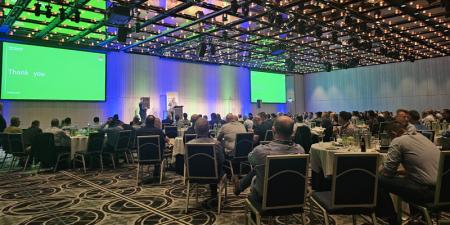The Work Health and Safety (Mines and Petroleum Sites) Regulation 2022 commenced on 1 September 2022. The Regulation is a remake of the Work Health and Safety (Mines and Petroleum Sites) Regulation 2014, which lapsed on 1 September in accordance with NSW subordinate legislation laws.
Access the new regulation here.
Among other things, the Regulation implements some of the recommendations of the 2020 Statutory Review into Work Health and Safety (Mines and Petroleum Sites) Laws by Mr Kim Bills. These are designed to:
- establish a safer and more modern work health and safety system that aligns with developments in industry best practice and the features of the mining industry in NSW
- improve clarity and transparency for industry and the Resources Regulator
- improve the flexibility of how the regulation is applied and decreasing regulatory burden.
The remade regulation includes a change in drafting style to reference ‘sections’ instead of ‘clauses’. In addition, the remade regulation includes the following reforms:
Exhaust emissions and fuel standards in underground coal mines (section 56)
The new regulation standardises emission sampling and analysis requirements across all underground mines not just coal mines. This is consistent with the MDG29 guideline for managing diesel pollutants in underground environments.
Use of plant in hazardous zones such as coal faces in underground coal mines (section 81)
The new regulation removes references to ‘Departmental approved plant’ and enables a six year transition to new items of plant.
High-risk activities (Schedule 3)
The new regulation includes high risk activity notification requirements for the commissioning of winding systems or booster fans that require registration, constructing petroleum wells, and raise bore activities.
Sampling and analysis requirements (Section 89 and Schedule 6)
The new regulation expands the requirement to sample airborne dust to include non-coal mines where respirable crystalline silica has been identified as a hazard. The new regulation also changes the coal and non-coal mine minimum worker exposure sampling requirement for airborne dust from ‘a period of at least 5 hours’ to ‘minimum of 80% of a shift’. The regulation also now captures respirable quartz and requires that air samples be tested for silica at all applicable mines.
Emergency plan testing (Section 92)
The new regulation includes a requirement for emergency plans to address recommendations made by the emergency service organisations consulted in the preparation of the plan.
Emergency exits (Section 99)
The new regulation expands the accessible emergency exit requirement to all extraction operations not just 'coal extraction or stoping operations'.
Duty to notify the Resources Regulator of certain incidents (Section 124)
The new regulation introduces additional reporting requirements for exceedances of certain airborne contaminants. These include carbon dioxide, diesel particulate matter, and inhalable dust. The new regulation also clarifies that obligations to notify relate to exposure of a person to atmospheric concentrations of carbon dioxide, dust and diesel particulate matter with respect to the time-weighted average in section 42 or the Workplace Exposure Standard for Airborne Contaminants.
Additional matters to be considered in a principal hazard management plan for ground or strata failure (Schedule 1)
The new regulation requires mine operators to consider risk of rock, coal or related pressure bursts in principal hazard management plans to manage risks of ground or strata failure.
Use of safety devices in refuge chambers (Schedule 4)
The new regulation removes oxygen candles from the list of prohibited equipment in refuge chambers.
Matters to be included in emergency management plans (Schedule 7)
The new regulation requires that onsite emergency resources include personal protection equipment (PPE) regardless of the incident type.
Statutory functions of electrical engineers (Schedule 10)
The new regulation now includes supervising and monitoring the installation, commissioning, maintenance and repair of electrical plant and installations at the mine.
Use of cables in hazardous zones (Section 83)
The new regulation includes an alternative requirement for the use of particular cables in hazardous zones where the methane concentration is <1.25%/vol.
Registration of plant design and items of plant (hoists) (Section 187)
The new regulation replaces the need to register items of plant in an opal mine with prescribed safety requirements for winding systems.
Exemptions for certain mines (Sections 178 and 180)
The new regulation includes a definition of a ‘tier-3 quarry’, which provides exemptions from certain provisions in the regulation for low-risk mining operations. The new regulation also exempts opal mines from needing to prepare a ventilation plan.
Qualified mechanical tradespeople (Schedule 10 Part 2)
The new regulation provides mine operators with the flexibility to identify appropriate qualifications, skills and experience for a mechanical tradesperson, in accordance with their mechanical engineering control plan.
Professional engineering demonstration (Section 179)
The new regulation allows the regulator to exempt a person from a provision of the regulation that requires compliance with an international or Australian standard in certain circumstances and if satisfied that an alternative approach will result in a level of risk that is at least equivalent to or less than the level of risk that would be achieved by compliance with the relevant standard.
Suspension or cancellation of a practicing certificate or certificate of competence (Sections 143 and 151)
The new regulation includes contraventions of health and safety obligation under the legislation as grounds for suspending or cancelling a practicing certificate or certificate of competence, if the contravention could or could have caused a serious risk to the health and safety of a person.
Class exemptions
The new regulation includes new provisions that incorporate class exemptions made by the Resources Regulator that were formerly in the NSW Government Gazette:
- Quarry managers (section 180)
- Tier-3 quarry managers (section 181)
- Notification requirements for exploration (section 182).
Australian and international standards
References to superseded standards have been updated with reference to current standards.
Mining, Exploration and Geoscience (MEG) consulted on the draft Regulation and supporting regulatory impact statement earlier this year before finalising. The MEG response to the submissions received during this process is available here.


